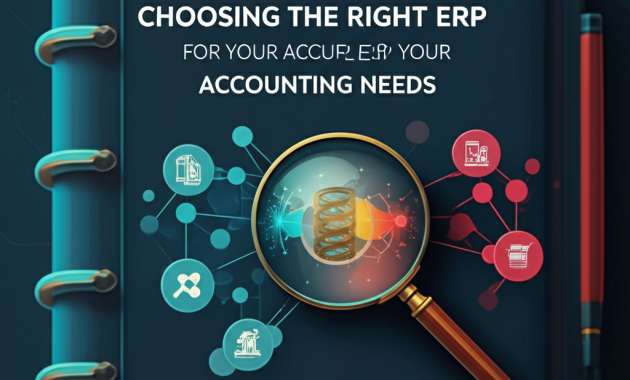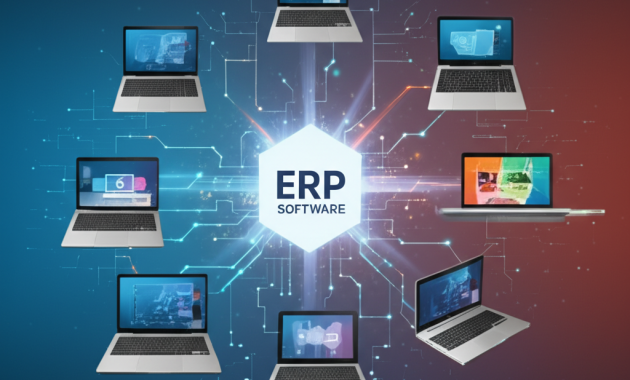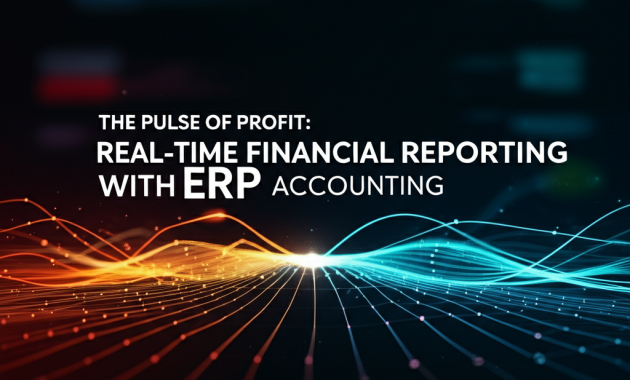In an increasingly digital and interconnected business landscape, efficient financial management is not just a necessity but a strategic advantage. While proprietary Enterprise Resource Planning (ERP) systems like SAP, Oracle, and Microsoft Dynamics have long dominated the market, their hefty licensing fees, vendor lock-in, and often rigid structures can be prohibitive, especially for small to medium-sized enterprises (SMEs) and organizations seeking greater control over their IT infrastructure.
Enter the world of open source ERP accounting software alternatives. These powerful, flexible, and often community-driven solutions offer a compelling counter-narrative, empowering businesses to manage their finances, operations, and resources without the burden of recurring licensing costs or the constraints of proprietary ecosystems. This article will delve into the compelling case for open source ERP accounting, explore its inherent challenges, and provide a comprehensive overview of leading alternatives that can transform your financial operations.
The Compelling Case for Open Source ERP Accounting
The allure of open source ERP accounting software lies in a multi-faceted value proposition that addresses common pain points associated with traditional solutions:
- Cost Savings on Licensing: This is perhaps the most immediate and tangible benefit. Open source software is typically free to download, use, and modify. While there are costs associated with implementation, customization, hosting, and professional support, the absence of per-user or per-module licensing fees can significantly reduce the Total Cost of Ownership (TCO) over time.
- Flexibility and Customization: With access to the source code, businesses gain unparalleled control. They can modify the software to perfectly align with unique workflows, industry-specific requirements, and evolving business needs. This level of adaptability is rarely found in off-the-shelf proprietary solutions, which often require expensive and complex workarounds.
- Vendor Lock-in Avoidance: Proprietary software can create a dependency on a single vendor for updates, support, and future development. Open source mitigates this risk. If a vendor ceases to exist or their services decline, the community or another service provider can step in, as the code remains openly available.
- Transparency and Security: The open nature of the code means it can be scrutinized by a vast community of developers, leading to quicker identification and patching of bugs or security vulnerabilities. This transparency often fosters a more secure and robust system over time.
- Community and Innovation: Open source projects thrive on collaboration. A vibrant community contributes to continuous improvement, new feature development, and robust peer support. This collective intelligence often leads to innovative solutions that address real-world business challenges.
- Scalability: Many open source ERP systems are designed to scale, from small startups to large enterprises. Their modular architecture allows businesses to start with essential accounting functions and gradually add more complex ERP modules (CRM, SCM, HR, Manufacturing) as they grow.
Navigating the Nuances: Challenges and Considerations
While the benefits are substantial, adopting open source ERP accounting is not without its own set of considerations:
- Implementation Complexity: While the software itself is free, successful implementation often requires technical expertise. Configuring the system, migrating data, integrating with existing tools, and customizing modules can be a complex undertaking, potentially requiring skilled internal IT staff or external consultants.
- Support Models: Unlike proprietary software with dedicated support teams, open source support can vary. While robust community forums and documentation are often available, mission-critical issues may necessitate subscribing to paid support plans from the project’s lead company or a third-party service provider.
- Required Technical Expertise: To fully leverage the customization potential, a certain level of technical proficiency (e.g., Python, JavaScript, SQL) might be needed. For businesses without such internal capabilities, reliance on external developers or consultants becomes essential.
- Total Cost of Ownership (TCO): While licensing costs are zero, businesses must factor in costs for hardware, hosting (cloud or on-premise), implementation services, customization, training, ongoing maintenance, and professional support. It’s crucial to evaluate the TCO comprehensively before making a decision.
- Feature Parity and Polish: While many open source solutions are feature-rich, some might lack the highly polished user interfaces or niche functionalities found in some high-end proprietary systems. Businesses need to assess if the available features meet their specific needs without compromise.
Leading Open Source ERP Accounting Alternatives
The market for open source ERP accounting software has matured significantly, offering a diverse range of solutions catering to different business sizes, industries, and technical aptitudes. Here are some of the most prominent alternatives:
1. Odoo
Overview: Odoo (formerly OpenERP) is perhaps the most well-known and comprehensive open source ERP solution available. It offers a vast array of business applications, with accounting being a core and highly developed module. Odoo operates on a freemium model: the "Community" edition is fully open source, while the "Enterprise" edition offers additional features, cloud hosting, and professional support through a subscription.
Accounting Capabilities: Odoo’s accounting module is robust, covering:
- General Ledger (GL)
- Accounts Receivable (AR) & Accounts Payable (AP)
- Bank Reconciliation
- Multi-company, Multi-currency, Multi-language support
- Tax Management
- Budgeting
- Financial Reporting (P&L, Balance Sheet, Cash Flow)
- Integration with sales, purchase, inventory, and manufacturing modules.
Strengths: Highly modular, extensive app store (both free and paid), modern user interface, strong community, and a wide range of integrated business functions beyond just accounting. Its flexibility allows it to adapt to almost any industry.
Considerations: The "Community" version might require more self-sufficiency for implementation and support. Some advanced features are exclusive to the "Enterprise" edition, which comes with a subscription fee. Customization can be complex due to its vastness.
Ideal For: Growing SMEs, mid-sized companies, and larger enterprises looking for a highly integrated and customizable solution across all business functions.
2. ERPNext
Overview: ERPNext is a modern, comprehensive ERP solution built on the Frappe Framework, known for its elegant user interface and ease of use. It aims to provide a single, integrated system for managing various business processes, with accounting as a foundational pillar.
Accounting Capabilities: ERPNext offers a strong accounting module including:
- General Ledger, Chart of Accounts
- Accounts Receivable (Sales Invoices, Payments)
- Accounts Payable (Purchase Invoices, Expenses)
- Bank & Cash Management
- Fixed Asset Management
- Multi-currency, Multi-company, Multi-fiscal year support
- Budgeting & Cost Centers
- Comprehensive financial reports (Trial Balance, P&L, Balance Sheet, Cash Flow, etc.)
- Payroll (country-specific localization may vary).
Strengths: Beautiful and intuitive user interface, highly comprehensive out-of-the-box, strong focus on usability, robust reporting, and a thriving community. Its Frappe framework makes customization relatively straightforward for developers.
Considerations: While comprehensive, it might have a steeper learning curve than simpler tools for absolute beginners. Some users report that its support for highly complex manufacturing processes might require more customization than Odoo.
Ideal For: SMEs, startups, and businesses across various industries (manufacturing, services, retail, education) seeking a modern, user-friendly, and comprehensive ERP with strong accounting capabilities.
3. Dolibarr ERP CRM
Overview: Dolibarr is an open source ERP and CRM software package designed specifically for small and medium-sized businesses, foundations, and freelancers. It prioritizes ease of use and quick deployment, making it an excellent entry point for those new to ERP systems.
Accounting Capabilities: Dolibarr’s accounting module, while simpler than Odoo or ERPNext, covers essential functions:
- Double-entry accounting (with specific modules for advanced needs)
- Invoicing (Sales & Purchase)
- Payment Management
- Bank & Cash Management
- Expense Reports
- Basic Financial Reports (e.g., ledger, journal).
- Tax management.
Strengths: Extremely easy to install and use, intuitive interface, lightweight, and highly modular. It’s an excellent choice for businesses that primarily need robust invoicing, payment tracking, and basic financial reporting without the complexity of a full-fledged ERP.
Considerations: Less comprehensive than Odoo or ERPNext, especially for advanced accounting needs like complex cost accounting, multi-entity consolidation, or very detailed budgeting. Its UI can feel a bit dated compared to modern alternatives.
Ideal For: Freelancers, very small businesses, startups, and associations that need basic ERP and CRM functions with a strong emphasis on simple accounting and invoicing.
4. Metasfresh
Overview: Metasfresh is an open source ERP solution particularly strong in the manufacturing and wholesale sectors. Forked from ADempiere/Compiere (older open source ERPs), it has been modernized with a focus on usability, performance, and a comprehensive feature set for larger businesses.
Accounting Capabilities: Metasfresh offers sophisticated accounting functionalities suitable for complex operations:
- General Ledger, Accounts Receivable, Accounts Payable
- Asset Management
- Cost Accounting
- Financial Statements (P&L, Balance Sheet, Cash Flow)
- Multi-currency, Multi-organization, Multi-language support
- Advanced Tax & VAT management
- Integration with supply chain, manufacturing, and sales.
Strengths: Designed for complex business processes, particularly strong in manufacturing and supply chain management, robust reporting, and a focus on performance. Its architecture is well-suited for larger data volumes.
Considerations: Higher learning curve due to its extensive features and complexity. The community is smaller compared to Odoo or ERPNext, and customization often requires a deeper technical understanding.
Ideal For: Mid-sized to large enterprises, especially those in manufacturing, wholesale, and distribution, that require advanced accounting integrated with complex operational processes.
5. Tryton
Overview: Tryton is a high-level, modular ERP business solution based on the Python programming language and PostgreSQL database. It’s known for its technical robustness, flexibility, and a focus on providing a solid framework for building tailored business applications.
Accounting Capabilities: Tryton’s accounting module is very comprehensive and flexible:
- Double-entry accounting
- General Ledger, Accounts Receivable, Accounts Payable
- Fixed Assets, Analytical Accounting
- Multi-company, Multi-currency, Multi-fiscal year
- Tax Management
- Extensive Financial Reports
- Integration with sales, purchase, stock, and project management.
Strengths: Extremely modular and customizable, robust and stable, strong adherence to accounting principles, and an excellent choice for developers or organizations with specific, complex requirements that want to build on a solid foundation.
Considerations: More developer-centric and less "out-of-the-box" ready for non-technical users. It requires significant technical expertise for implementation and customization. The user interface is functional but less modern or intuitive than Odoo or ERPNext.
Ideal For: Businesses with specific, complex accounting or operational requirements that have in-house technical expertise or are willing to invest in custom development. Organizations valuing technical purity and ultimate control.
Key Features to Prioritize in Open Source ERP Accounting
When evaluating open source ERP accounting alternatives, consider the following critical features:
- Core Accounting Functions: General Ledger, Accounts Receivable, Accounts Payable, Bank Reconciliation, Journal Entries.
- Financial Reporting: Customizable P&L, Balance Sheet, Cash Flow, Trial Balance, and other critical financial statements.
- Multi-Entity Support: Ability to manage multiple companies, branches, or cost centers within a single system.
- Multi-Currency & Multi-Language: Essential for businesses operating internationally.
- Tax Management: Robust capabilities for various tax regulations (VAT, GST, Sales Tax, etc.).
- Budgeting & Forecasting: Tools for financial planning and performance tracking.
- Fixed Asset Management: Tracking and depreciation of company assets.
- Integration Capabilities: Seamless integration with other ERP modules (CRM, Inventory, Sales, Purchase, Manufacturing, HR/Payroll) and third-party applications.
- Audit Trails & Security: Comprehensive logging of transactions and robust access controls.
- Usability & User Interface: An intuitive interface can significantly impact user adoption and efficiency.
- Scalability: The ability to grow with your business needs without requiring a complete system overhaul.
Implementation and Support Strategies
Successfully adopting an open source ERP accounting solution often involves:
- Self-Hosting vs. Cloud: Decide whether to host the software on your own servers or opt for a managed cloud service provider (which often charges a fee for hosting and maintenance).
- Community vs. Professional Support: Leverage active community forums for basic queries, but consider paid professional services for critical support, complex customizations, or ongoing maintenance.
- Phased Implementation: Start with core accounting modules and gradually roll out other ERP functionalities as your team becomes familiar with the system.
- Data Migration: Plan meticulously for migrating historical financial data from your old system.
- Training: Invest in thorough training for your accounting and operational teams to maximize system adoption and efficiency.
Who Benefits Most?
Open source ERP accounting alternatives are particularly well-suited for:
- Small and Medium-sized Enterprises (SMEs): Seeking powerful functionality without the prohibitive costs of proprietary solutions.
- Startups: Looking for flexible, scalable systems that can grow with their evolving needs.
- Organizations with Specific Needs: Businesses requiring highly customized workflows or industry-specific functionalities.
- Businesses Prioritizing Control: Those wanting full ownership of their data and software stack, avoiding vendor lock-in.
- Tech-Savvy Businesses: Companies with in-house IT expertise or a willingness to invest in technical support.
Conclusion
The landscape of business software is rapidly evolving, and open source ERP accounting alternatives are no longer just niche options but formidable contenders offering powerful, flexible, and cost-effective solutions. By understanding their unique benefits, navigating potential challenges, and carefully evaluating the leading options like Odoo, ERPNext, Dolibarr, Metasfresh, and Tryton, businesses can unlock greater financial freedom, gain unparalleled control over their operations, and build a robust foundation for sustainable growth in the digital age. The choice to embrace open source is not just a technological decision, but a strategic one that can redefine a company’s financial future.



